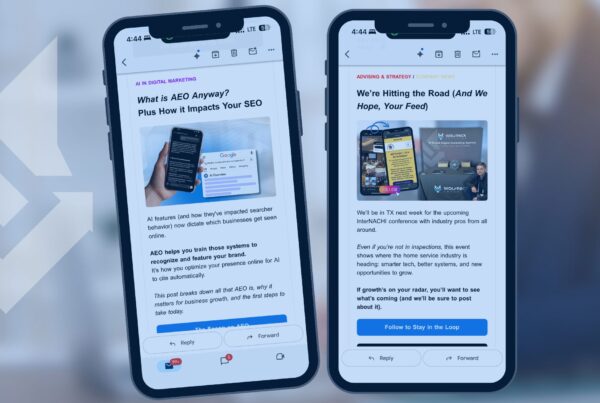Last updated on October 31st, 2025 at 12:51 pm
Videos are one of the most powerful ways to communicate brand messaging. They engage audiences quickly, create emotional connections, and deliver information efficiently. With video consumption growing daily, businesses need to use video to share their brand messaging effectively. A strong video strategy helps build trust, increase engagement, and boost conversions. Video marketing isn’t just a trend—it’s a fundamental way for brands to stand out in a crowded digital landscape.
Contents
Understanding Brand Messaging Through Video
Brand messaging through video refers to how a business communicates its identity, values, and mission through visual content. A well-crafted video makes a brand recognizable and relatable. It goes beyond selling a product—it tells a story. The right messaging evokes emotions and ensures viewers remember the brand long after watching. To create a lasting impression, every element in the video—script, visuals, tone, and music—should align with the brand’s identity.
Effective brand messaging in video isn’t just about what is said, but how it is conveyed. The pacing, colors, and even the soundtrack play roles in shaping the audience’s perception. When done correctly, video marketing turns a brand into a memorable experience rather than just another business vying for attention.
Key Elements of Effective Brand Messaging in Video
Every video should reflect a brand’s identity while keeping the audience engaged. These key elements ensure consistency and effectiveness:
- Clear and Consistent Brand Voice
A brand’s voice should remain the same across all marketing channels. Videos should match the tone and style of other brand materials. Whether the brand is fun and casual or professional and authoritative, the messaging should align with audience expectations. Even slight deviations in tone can confuse viewers and weaken brand recognition. - Compelling Visuals and Storytelling
People connect with stories more than sales pitches. Videos should tell a story that highlights the brand’s mission, values, or solutions. Strong visuals reinforce brand perception. Colors, fonts, and design elements should match the brand’s established style. Studies show that consumers remember visual information much better than text alone, making visuals a key aspect of successful messaging. - Authenticity and Relatability
Authentic content builds trust. Real employees, behind-the-scenes clips, and genuine customer testimonials make a brand feel approachable. People engage with videos that feel personal and real rather than overly polished advertisements. A relatable brand fosters loyalty, as viewers appreciate brands that seem transparent and honest. - Call-to-Action (CTA)
Every video should guide the viewer toward an action. Whether it’s visiting a website, subscribing, or making a purchase, a clear CTA ensures the video serves a purpose beyond entertainment. A strong CTA should be seamlessly integrated into the video so that it feels like a natural next step rather than an abrupt sales pitch.
Types of Videos for Brand Messaging
Different types of videos serve different marketing goals. Choosing the right format strengthens brand messaging through video and makes content more engaging. By selecting the best type of video for each situation, brands can maximize their impact.
- Brand Story Videos: These videos highlight the company’s history, mission, and values. They help audiences understand what makes the brand unique. A well-crafted brand story video can serve as an introduction to potential customers and reinforce loyalty among existing ones.
- Product/Service Explainers: Short and engaging videos that showcase how a product or service works. They provide value by addressing customer needs. Explainer videos are excellent for complex products that need simple, engaging breakdowns.
- Customer Testimonials: Real experiences from customers build trust and credibility. These videos show potential buyers how others benefited from the brand. A satisfied customer’s words often hold more weight than traditional advertising.
- Behind-the-Scenes Content: Showing the brand’s culture and team members makes the company more relatable. This type of video builds deeper connections with audiences. Behind-the-scenes videos are especially effective for social media, where authenticity is highly valued.
- Short-Form Social Media Videos: Platforms like Instagram Reels, TikTok, and YouTube Shorts are great for quick, engaging content. These videos increase visibility and encourage interaction. Short-form videos are ideal for grabbing attention and encouraging shares.
Best Practices for Creating Impactful Video Content
For brand messaging through video to be effective, videos must be high quality, optimized, and engaging. Following best practices ensures videos stand out. A great video not only communicates a message but also leaves a lasting impression.
- Optimize for Different Platforms
Each platform has unique video requirements. Videos for YouTube should be longer and more detailed, while TikTok and Instagram favor short, engaging clips. Formatting videos correctly improves their reach. Repurposing content by adjusting it for each platform increases exposure without requiring additional production efforts. - Include Captions and Accessibility Features
Many viewers watch videos without sound. Adding captions ensures accessibility for all audiences, including those with hearing impairments. Studies show that captions also boost viewer retention, as they help audiences follow along more easily. - Maintain High-Quality Production
Clear audio, sharp visuals, and good lighting make videos more professional. While high production value is ideal, authenticity is more important than perfection. Even smartphone videos can be effective if they are well-lit, stable, and thoughtfully edited. - Use Video SEO Techniques
To increase visibility, optimize video titles, descriptions, and tags with relevant keywords. Embedding videos on the company website also improves search rankings. Search engines prioritize video content, making SEO optimization a crucial step for maximum reach.
Measuring Success: How to Evaluate Video Performance
Tracking performance helps brands improve their video strategy. By analyzing key metrics, businesses can refine their brand messaging through video for better engagement and conversion rates. Regularly reviewing performance helps brands adjust their strategies to achieve the best results.
- Engagement Rate: The number of likes, comments, shares, and watch time. High engagement means the audience finds the content valuable.
- Click-Through Rate (CTR): Measures how many viewers click on links or CTAs. A low CTR may indicate unclear messaging.
- Conversion Rate: Tracks how many viewers take action after watching. This metric determines whether the video drives real business results.
- Audience Retention: Shows how long people watch before dropping off. Strong brand messaging in video keeps viewers engaged until the end.

Additionally, brands can use A/B testing to experiment with different video styles, messages, or CTAs to determine what resonates most with their audience. Tracking data over time helps brands refine their approach and make data-driven decisions.
Conclusion
Brand messaging through video is an essential marketing tool. It tells a story, builds trust, and engages audiences in ways other formats cannot. By using clear messaging, compelling visuals, and strong CTAs, businesses can create videos that leave a lasting impact. Whether through brand story videos, customer testimonials, or short-form content, companies that leverage video effectively strengthen their brand presence. Now is the time to invest in video marketing and see the results firsthand. With the right strategy, video can be a game-changer for brand growth and audience connection.
If your brand needs expert guidance in crafting compelling video content, our marketing agency can help. We specialize in creating high-impact videos that align with your brand identity and drive results. Contact us today to start building your video marketing strategy!






